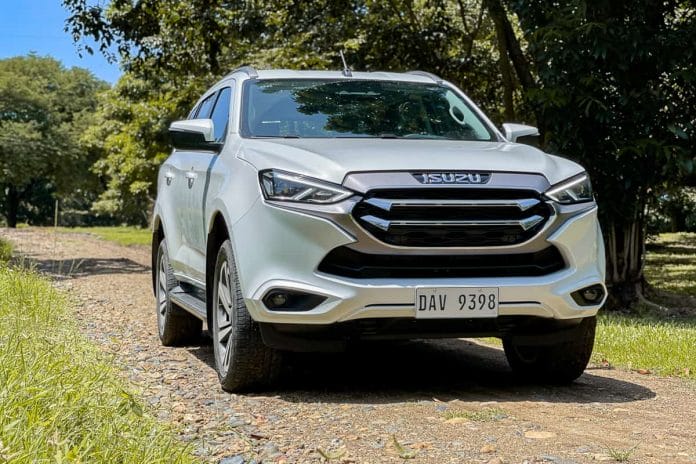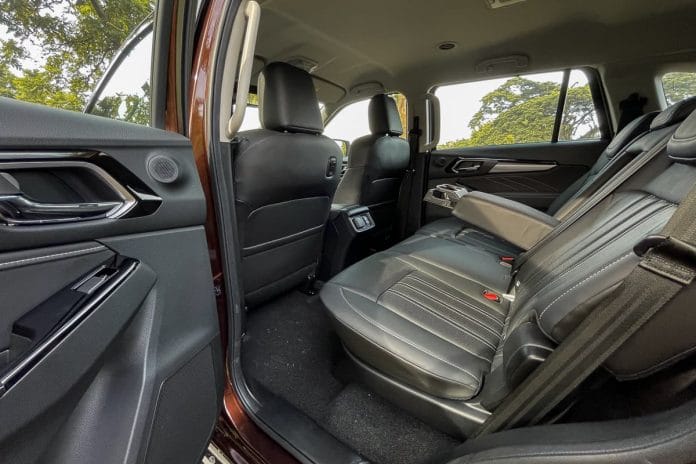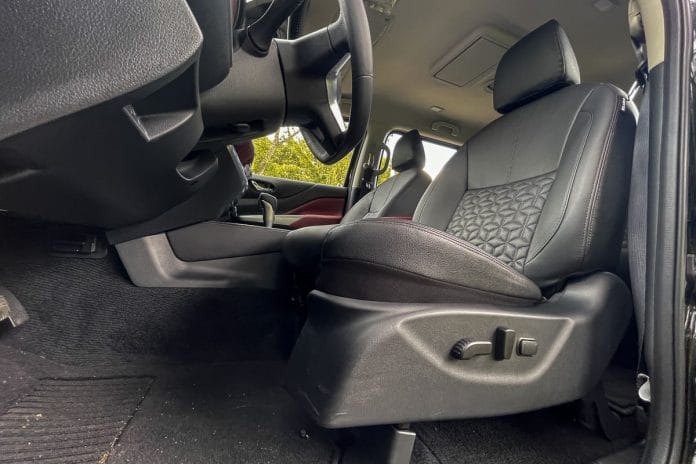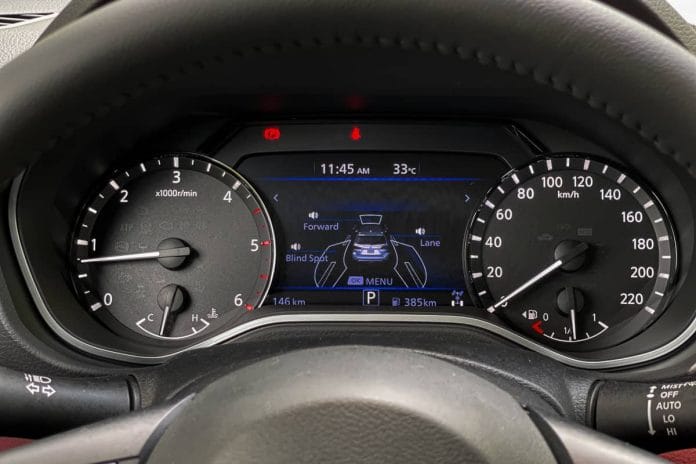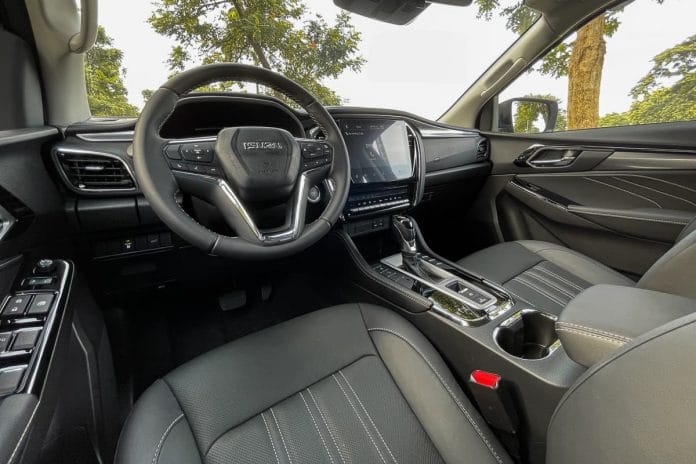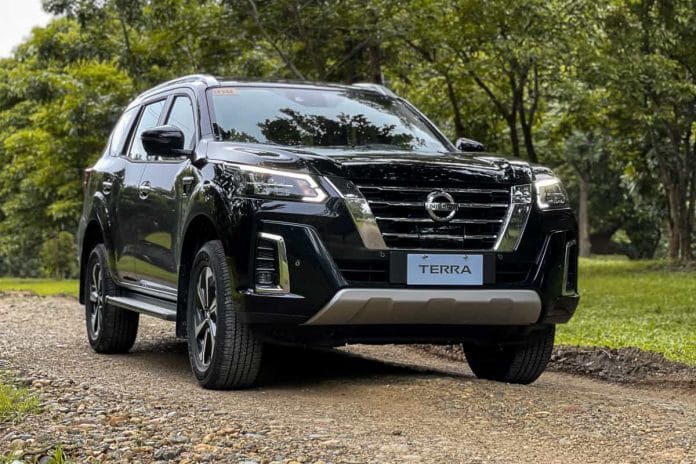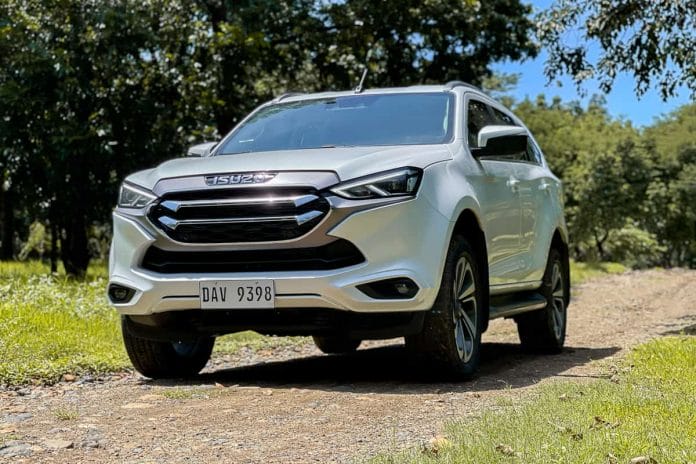We’ve said it before and we’ll say it again: 2021 is the year of midsize SUVs. There are quite a few in the market already, but one Chinese model has been added, while the segment leader, the Toyota Fortuner, got a price hike along with a few tech updates.
However, two important Japanese contenders have been given a heavy revamp, as well. I’m talking about the Isuzu mu-X and the Nissan Terra. The Nissan SUV’s updates are part of its mid-cycle refresh but it was intensive enough, almost worthy of being a new-generation model. The Isuzu, on the other hand, is a completely new model with a new platform, updated engine, redesigned cabin – practically all the works.
Fortunately, I’ve driven both for extensive periods of time, so it’s time for a comparison review so you’ll know which one fits your purpose. And in line with that, I’ll be comparing both top-spec flavors of each vehicle, the LS-E for the mu-X and the VL for the Terra.
NOTE: I didn’t test the off-road capability of both SUVs as this is a holistic test, aimed to check out which is better as a daily family vehicle. Off-roading SUVs are a niche.
Exterior
Isuzu and Nissan took the same route in terms of designing their contenders. Macho with a touch of class, that’s the theme.
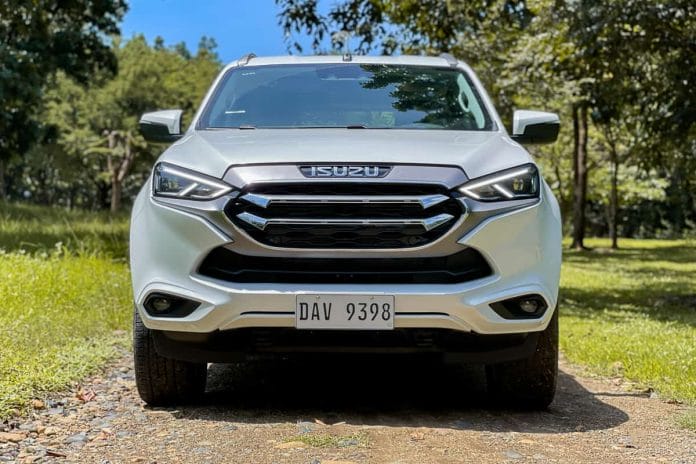

The Terra has a busier styling with several chrome bits, while the mu-X went with a ‘less is more’ approach, getting rid of the chromes and claddings to evoke a cleaner yet still imposing aura. Both SUVs come with full LED lighting as well, but the mu-X has the advantage of having a bigger set of wheels.
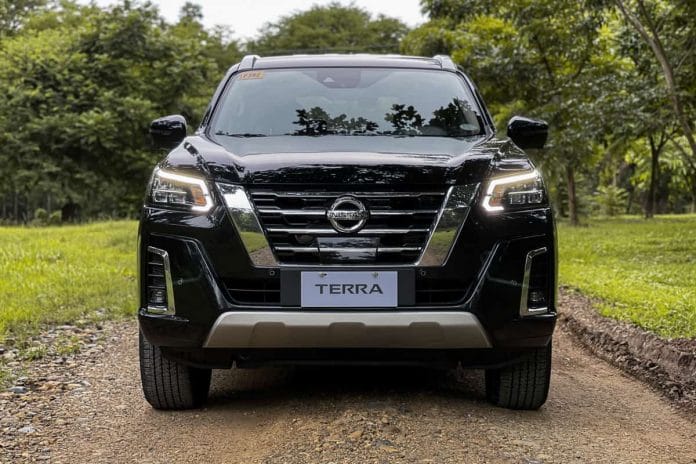
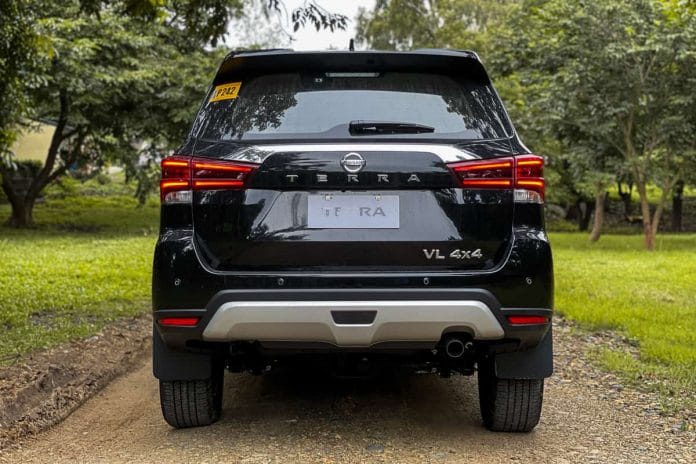
Looks are subjective, that’s a fact. But in my humble opinion, I’m giving this round to the mu-X for its cleaner and more cohesive look, plus the fewer application of chrome accents suits my taste. Although I must say, props to Nissan for giving the Terra a Patrol-like appeal. Very classy.
Interior
As top-spec variants, Isuzu and Nissan pulled all the stops in dressing up the cabin of their aces – but that doesn’t mean that there weren’t any compromises. Despite the bevy of leather, both SUVs employ hard polymers and had to use piano black plastics that are easy on the eyes but painful to maintain. And this is where the differences come in.
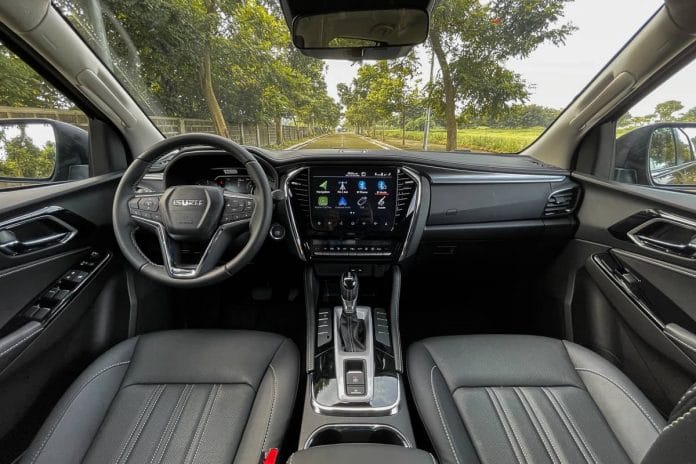
The plastics in the mu-X look and feel cheaper, while the leather in the Terra feels better to the touch and much cozier to sit on. The Terra’s dashboard layout is also more pleasing to the eyes. Although the burgundy cowhide in the Nissan SUV is up for preference, I appreciate the attempt to give the cabin a livelier look.
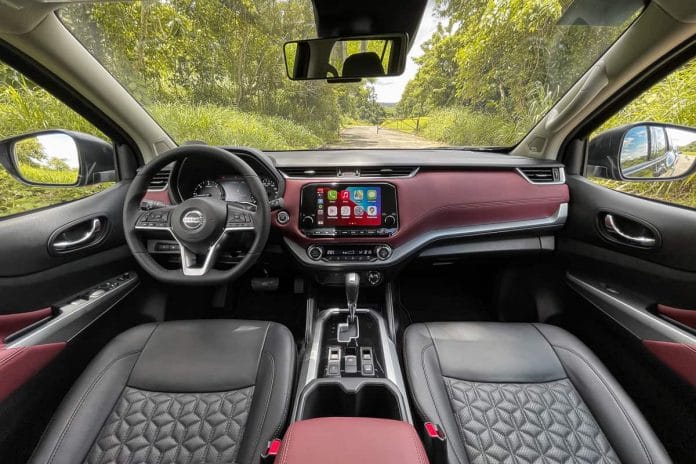
Then there’s the question of space. The mu-X trumps the Terra in this regard especially for adult occupants in the third row. In the Nissan, even with its second-row adjusted to allow more space behind, the legroom is disappointing and the seating posture isn’t for adults. Plus, you’ll appreciate the fact the mu-X’s roof-mounted air-conditioning vents produce cold air, while the Terra’s make do with blowers, so there’s that.
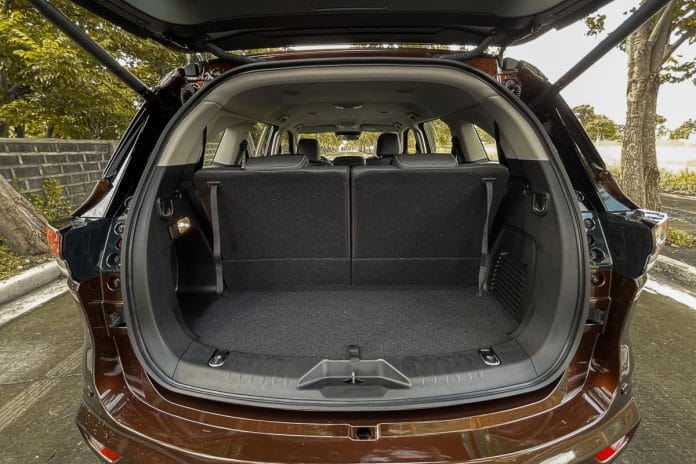

Overall, I’d give this round to the Terra for its better interior aesthetics. The cabin feels more refined, as well, giving you the feeling that you’ve spent your money’s worthwhile seated.
But if you want a livable room for all seven occupants, the mu-X is the better choice.
Tech & safety
Here’s the tricky part. Both SUVs come with a plethora of tech and safety features. They’re too many to mention, but there are notable differences between the two that can be considered a dealbreaker by some.
While both SUVs come with electronic controls, the mu-X has the advantage with its remote-start function and power tailgate. However, the Terra upends the mu-X with its around-view monitor and rear-view camera, and, my favorite, the one-touch second-row tumble buttons. The Terra also comes with a better-looking digital display in between the gauge clusters; the mu-X’s smaller screen looks awfully dated and definitely needs improvement.
For the infotainment, the mu-X has a bigger 10.1-inch touchscreen with Apple CarPlay and Android Auto. However, the Terra’s infotainment, albeit smaller, comes with wireless CarPlay that’s partnered with wireless charging. The Terra also comes with a second-row fold-up screen with HDMI connectivity, so yes, you can connect it with your laptop or even a gaming console.
Now, here’s the clincher. While both vehicles come with expensive active and passive safety features, such as automatic emergency braking, the mu-X has a huge advantage with its adaptive cruise control. The Terra makes do with standard cruise control. If you’re one who frequents highways, then the adaptive type will be very convenient for you.
However, for this round, I’m hailing the Terra as the winner because its tech and safety features are more practical for daily use, especially if you’re buying the SUV as a family vehicle.
Driving, handling, & comfort
This is probably the tightest contest between two cars I’ve ever written. Despite having varying engine displacements (Terra’s 2.5-liter versus mu-X’s 3.0-liter), both the top-spec Terra and the mu-X make 188 hp and 450Nm of torque from their turbodiesel engines. Both have VGS turbos with intercooler and common rail direct injection fuel system. Transmission-wise, the Terra has seven gears while the mu-X has six – both automatic and with manual mode via gearlever.
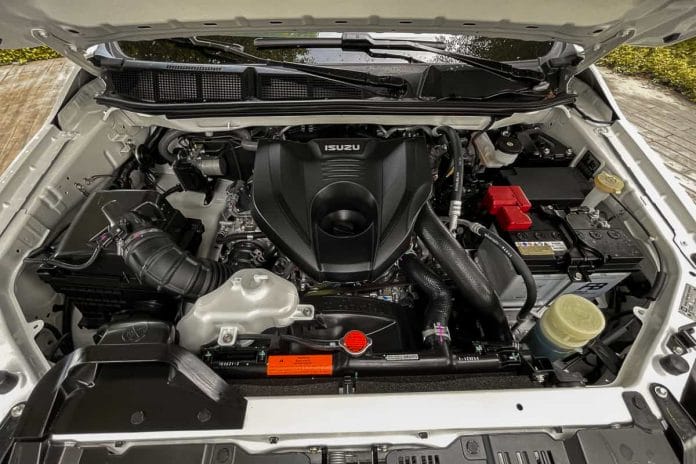
The difference, however, manifested in how early their peak torque entered. The mu-X’s pull came as early as 1,600 RPM, while the Terra came at around 2,000 RPM. This translated to better acceleration on the actual drive – though I couldn’t say that the Terra’s power delivery was bad. The mu-x’s just felt better.
In terms of braking, the Terra suffered from a slight later braking point, which made the mu-X stand out in this regard.
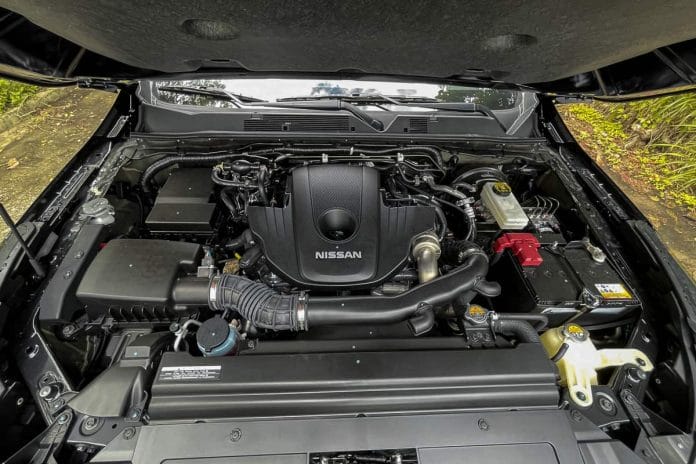
However, the Terra shines in terms of handling. The Nissan SUV was easier to maneuver around because of its lighter steering feel, better driving visibility and ground feedback, and the availability of a 360-degree-view camera. The mu-X also felt bigger than it really was, so it wasn’t exactly a cinch to drive within the city.
Lastly, the Terra beats the mu-X in terms of ride comfort. I tested both while driving and while seated on the second row and all I could say is that I wouldn’t mind sitting on the second row of the Terra for hours, as compared to the mu-X. NVH insulation was also notably better in the Terra.
Considering all of the points mentioned, I’m giving the Terra this round as it’s a more civilized SUV despite the better power delivery employed by the mu-X.
Fuel consumption
For fuel consumption, it’s important to point out that the mu-X is generally heavier than the Terra, albeit the difference is marginal (around half a sack of rice). Considering that their power outputs are the same, the other factor that will affect fuel efficiency is their gearing and of course, variance in terms of driving.
That said, I got a similar fuel economy rating on both the Terra and mu-X on city driving, which was around 8-11 km/L, depending on the traffic. On the highway, however, the mu-X stood out, registering 17 km/L at an average speed of 90 km/h. The Terra returned 15 km/L with the same average speed.
Pricing & verdict
Of course, what’s a comparison without checking out their price tags? The top-spec Isuzu mu-X LS-E is priced at P2,450,000 for its 4×4 AT variant, while the 4×2 AT has a sticker price of P2,100,000.
On the other hand, the Nissan Terra VL goes for P2,354,000 for the 4×4 AT, while the 4×2 AT sells for P1,999,000.
With all the things I pointed out in this comparison considered, I believe that the Terra presents the better value for your money and the better daily family SUV. It wasn’t a landslide win, though, so as always, I implore you to test drive both vehicles you can check out the differences on your own.


